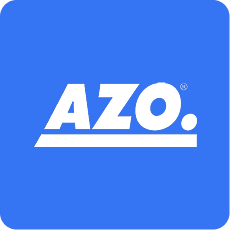Experience strategies built exclusively for you
-
Solutions
-
Our Custom Approach
-
Brand Experience
Establish a brand that connects and converts
-
Marketing Enablement
Empower your marketing efforts with strategic support
-
Sales Enablement
Improve pipeline efficiency and close more deals
-
Revenue Ops
Maximize revenue growth with streamlined operations
-
Website Design
Create meaningful website experiences that inspire action
-
Our Custom Approach
-
Industries
-
Industry Overview
See how we create impact across industries
-
Industrial
Engage technical minds and mass produce results
-
Technology/SaaS
Accelerate growth in a rapidly-shifting tech world
-
Medical Device & MedTech
Connect your medical innovations to the right audiences
-
Sustainability
Turn your mission into an inspiring, lasting movement
-
Industry Overview
- Client Success
- About

Website Design Services
Turn your website into a sales engine
With a website that’s built for business growth and designed with user experience in mind, potential buyers can become familiar with your brand and will be compelled to act.
Our Approach to Website Design
01
02
03
04
05
01
Defining the Customer Journey
Some web designers jump right into templates. At Kuno, our website design services kick-off with a thorough understanding of your business, sales goals, audience needs and unique differentiators, as well as how visitors have been using your legacy site. These findings help our team establish a performance baseline and map out a strategy to improve traffic, site usability and even conversions on the websites we design—most of which are on HubSpot and WordPress.
02
Prioritizing User Experience
Effectively engaging buyers means delivering value-rich information tailored to their needs. Our UX optimization for websites includes identifying key pages and user-friendly features that align with each buyer’s journey so they can make informed decisions. Our wireframing process establishes clear content hierarchies and a friction- and frustration-free path to conversion.
03
Messaging & Visual Design
Professional website design is a blend of strategic messaging and impactful visuals that work together to attract and engage visitors. We write and design with your target audience and their emotions in mind to create an experience that builds trust and reinforces your brand. Our goal is to make visitors feel at ease and confident in their choice to become your customer.
04
Code, Test & Launch
From front-end and back-end development to database integration, we make sure every part of your new site is built for performance. Before launch, we rigorously test for speed, responsiveness and functionality, while implementing on-page and technical optimizations to help your site rank well with search engines. The result? A website that’s in every way designed to perform from day one forward.
05
Assess & Optimize
After a website is launched, we closely monitor user behavior, analyze data and make strategic optimizations to improve performance. Through A/B testing, heat maps, user-generated insights and Google Analytics reports—to name a few examples—we continue to refine the user experience so your site remains fast, engaging and effective.
Our Website Strategy & Design
UI Design
Great design is more than just looks—it’s how your brand feels online. We come up with polished, responsive layouts and custom visuals that make your website as dynamic and inviting as your brand itself.
UX Strategy
Every click should bring your audience closer to conversion. As part of our web design services, we map out thoughtful user journeys and optimize every step, creating experiences that are as enjoyable as they are effective.
Design Systems
By establishing a unified set of design principles, reusable components and clear guidelines, we empower our clients to maintain brand consistency while streamlining website design and development.
UX Copywriting
We don’t just fill space—we create content with purpose. Through research and collaboration, we develop messaging that reflects your brand voice, connects with your audience and complements your site’s design and functionality.
Website Development
From launch to scale, we turn your website into a powerful marketing tool. Our team builds robust websites that look great and perform seamlessly—whether on HubSpot, WordPress or an eCommerce platform.
Success Stories in Web Design

Improving Big Bolt’s Site Traffic & User Experience
The challenge:
Dated website that lacked SEO
The strategy:
Keyword-driven website strategy, plus the development of a new blog template
The results:
- 34.6% increase in organic sessions
- 48.7% increase in avg. session duration from organic search traffic

Debuting E2Companies’ Innovative Technology
The challenge:
Develop a new digital brand identity
The strategy:
Create a compelling website experience, aligned with tradeshow efforts
The results:
- 135% increase in year-over-year website traffic
- 400 leads generated from major industry tradeshow

Supporting RapidAI’s Go-To-Market Strategy
The challenge:
Minimal marketing collateral and web presence
The strategy:
Branding guidelines, website redesign and an SEO-driven content strategy
The results:
- 1,373% increase in organic contacts
- 177% increase in time on page
Our Website Design Highlights
Sort by Industry
If trust isn’t everything,
it’s the only thing.
There’s no better measurement of a successful, collaborative strategy than a satisfied client.

We are so incredibly grateful for the Kuno team and your process. Everyone is so collaborative and easy to work with. Kuno Creative helped us navigate a website redesign project on a short timeline with ease and provided the expertise we needed to help our internal team refine our messaging. We look forward to continuing this wonderful partnership.
Christy Ricketts
-
GES, global exhibition and trade show management


Just as our energy reliability solutions are mission-critical for our clients, our partnership with Kuno is critical to our success. They’ve been instrumental to our growth and a key partner in elevating our brand. We rely on their marketing strategy expertise and ability to execute quickly on projects ranging from our new website to materials needed for tradeshows and sales meetings. They are a true partner, and we have a bright future ahead.
Neil Cowan
-
e2 Companies


We have been working with Kuno Creative for over two years. Kuno spearheaded our HubSpot integration, created a new brand identity for our company and designed and built a new website for us on the HubSpot CMS. Their work is creative and fresh. Their team is smart, thinks outside the box and a pleasure to work with.
Diane Merrick
-
RapidAI


We chose Kuno as our partner to completely rebuild our online presence. They have been a tremendous asset to our university and a vital partner that we lean on and trust. From day one their entire team has been outstanding. There is not a better feeling than to realize you made the right choice in situations like this -- and we did.
Scott Watkins
-
Saint Leo University


We are really happy with the new design of our site. Kuno helped us launch our inbound marketing with HubSpot and it has been a success. In addition, Kuno provides our team with coaching services on social media marketing best practices. I highly recommend the services of Kuno Creative.
Elisabeth Hudak-Brand
-
Magruder Hospital


I wholeheartedly recommend Kuno Creative to anyone in need of a professional and creative team to elevate their online presence. Their dedication to excellence, coupled with a friendly, timely, and collaborative approach, makes them a standout choice for website design services. AZO Inc. is thrilled with the results and is looking forward to continued success with AZO's revitalized online presence.
Ben DAlessio
-
AZO, Inc.


Kuno is a wonderful strategic partner who helps us with content creation and managing our digital marketing efforts. We've used them for about three years and are very pleased with their work! They helped us redesign and maintain two large website projects for our telecom industry and have shown much growth in their continued desire to learn our complex industry and target audiences. We've seen a very large lead generation and revenue gain from their efforts.
Natalie Fleeman
-
Ritter Communications


The Kuno team walked our company through a major website overhaul and brand refresh. A massive effort. We had many questions and revisions, and our Kuno partners were always available, responsive and helpful during the months-long process. I can’t recommend them enough and can’t imagine where we would have been without them. Thank you!
Robin Suttell
-
Onix


Not only did Kuno possess expertise about HubSpot, it was clear they could help guide us with all aspects of website design from UX planning to launch. Throughout the project, the team really went above and beyond.
Rachel Iannarino
-
Continental Office

.png)
We worked with Kuno to launch a series of websites. Their expertise is unmatched, and they continue to provide us with great work in the area of development. I would recommend Kuno to anyone launching a site or who just wants expert advice on how to make the most of their current marketing efforts.
Marc Costanzo
-
Hospital Health Care


I still get choked up watching the hero video Kuno captured and produced for our website redesign. Their careful planning and perfect execution delivered us a video that not only portrays the various aspects of our business, but adds emotion. By combining our history and values, the video tells the story of our business. The professional quality of the video, audio, and production are impressive. Great work!
John Falbo
-
Terminal Ready-Mix


Kuno Creative exceeded all our expectations in our rebranding and website redesign. Their team really listened to our specific needs, our company history, our culture, our vision - then they reached out to our customers to learn even more about us. The final products were more impressive than we could have imagined. We are so grateful to the entire team at Kuno for their excellent work to create a new brand and website that uniquely represents our company.
John Falbo
-
Terminal Ready-Mix

.png)
With Kuno's support, our digital presence is now in line with the direction of our business. They understood the unique needs of our industry and used a collaborative approach to help us cross the redesign finish line faster.
Paul Krepelka
-
Amerline

Frequently Asked Questions
What is UX-focused web development, and why is it important?
UX-focused web development keeps user experience top of mind when designing and building websites. This means prioritizing intuitive navigation, accessibility, fast load times and friction-free interactions. A well-optimized UX keeps visitors engaged, reduces bounce rates and improves conversions by making it easier for users to find what they need and act.
How do website design and UX services work together to improve user experience?
Website design focuses on the visual and structural aspects, ensuring branding, layout and aesthetics are appealing and functional. UX services prioritize user behavior, accessibility and ease of navigation to enhance the overall user experience. By combining strategic website design with UX best practices, businesses can create websites that look great while also naturally guiding visitors toward conversion.
What are the best practices for UI design in website development?
UI design best practices include consistency in layout, clear visual hierarchy, intuitive navigation and accessible color contrast. Good UI design also accounts for a responsive design, minimalistic aesthetics and using interactive elements like buttons and forms in a way that guides users through their journey.
Why is mobile-friendly web design essential?
The majority of web traffic now comes from mobile devices. A mobile-optimized site uses responsive design to adjust to different screen sizes, ensures touch-friendly navigation, optimizes images and videos for faster load times and prioritizes key content to improve usability.
How can A/B testing and heat maps improve website performance?
A/B testing allows businesses to compare different versions of a webpage to determine which design, content or CTA placement performs best. Heat maps provide insights into how users interact with a site by showing where they click, scroll and spend the most time. These tools help identify pain points, optimize layouts and drive improvements for both UX and conversions.
What should businesses consider when integrating their website with other platforms?
Integrating a website with CRM systems, marketing automation tools, eCommerce platforms and third-party APIs can streamline business operations and improve customer experiences. When planning integrations, consider data security, system compatibility and automation opportunities so that data flows effortlessly and functionality is available across all platforms.
What are the key stages of a web design project?
A web design project typically involves several key stages: discovery and research, wireframing and design, development, testing and launch. A good project plan will also include ongoing maintenance and optimization to make sure the new custom website continues to meet business objectives.
What should I look for when selecting a web design agency for my project?
Look for a web design agency with a proven track record, relevant industry experience and a collaborative approach with web designers, web developers and project managers. Evaluate their portfolio, ask about their custom web design and development services and ensure they prioritize both aesthetics and functionality.
How can I avoid losing SEO rankings during a website redesign?
Conduct a thorough search engine optimization audit before the redesign, map out 301 redirects for URL changes and maintain optimized meta data. After the new website is launched, monitor performance metrics closely to address any dips in traffic or rankings.
What are the benefits of using professional website copywriting services?
Professional copywriters bring a fresh perspective, advanced writing skills and a thorough understanding of SEO best practices. They can create persuasive, conversion-focused content that speaks directly to your target audience while maintaining a consistent brand voice and optimizing for search engines.















